Simon Madziar
Simon Madziar
Choosing the right business structure can make or break your venture's success. Two structures consistently dominate discussions among Australian entrepreneurs and their advisors: companies and trusts. Both offer sophisticated benefits, yet each comes with distinct complexities that can significantly impact your tax obligations, asset protection, and operational flexibility. The decision between these structures isn't just about immediate needs—it shapes your business's entire future. Companies provide clear corporate governance and potential tax advantages, while trusts offer unparalleled flexibility in income distribution and asset protection strategies. Understanding these differences becomes crucial when you're building something designed to last. Many business owners find themselves overwhelmed by the technical details, compliance requirements, and long-term implications of each structure. The stakes are high: choosing incorrectly can result in unnecessary tax burdens, limited growth opportunities, or inadequate asset protection. That's precisely why understanding both structures thoroughly is essential before making this pivotal decision. This comprehensive analysis examines both company and trust structures in detail, providing you with the insights needed to make an informed choice for your unique circumstances. Companies represent separate legal entities distinct from their owners. When you establish a company in Australia, you're creating an independent organisation capable of owning assets, entering contracts, and bearing legal responsibilities. The Australian Securities and Investments Commission (AISIC) oversees company registration through a straightforward online process. The formation process requires appointing directors, issuing shares, and establishing a registered office. You'll need at least one director who's ordinarily resident in Australia, and companies must have a minimum of one shareholder. Share capital can be issued for nominal amounts, making companies accessible for businesses of various sizes. Companies operate under a clear hierarchical structure. Shareholders own the company through their shareholdings, while directors manage day-to-day operations. This separation creates distinct roles and responsibilities, with directors owing fiduciary duties to the company and its shareholders. Board meetings and shareholder meetings provide formal decision-making frameworks. Companies must maintain proper records, including minute books, share registers, and financial statements. This structured approach brings accountability but requires ongoing administrative attention. Companies enjoy Australia's competitive corporate tax rates. Small companies with aggregated turnover under $50 million benefit from the reduced corporate tax rate of 25%, while larger companies pay 30%. This often provides significant tax advantages compared to individual tax rates. Dividend imputation allows companies to pass franking credits to shareholders, eliminating double taxation. Shareholders receive credit for tax already paid by the company, making dividend distributions tax-effective. Companies can also retain profits for future growth without immediate tax consequences to shareholders. Companies face substantial compliance obligations. Annual financial statements must be prepared and audited (for certain companies), annual ASIC fees are payable, and detailed record-keeping is mandatory. Directors must ensure the company meets its obligations under the Corporations Act, including continuous disclosure requirements where applicable. These compliance costs can be significant, particularly for smaller operations. However, the structure's benefits often justify these expenses for growing businesses. Trusts operate through relationships rather than separate legal entities. A trustee holds assets for beneficiaries' benefit, creating flexible arrangements that can adapt to changing circumstances. Trust deeds establish the rules governing these relationships, making proper drafting crucial for long-term success. Discretionary trusts, the most common business trust structure, allow trustees to determine how income and capital are distributed among beneficiaries. This flexibility provides powerful tax planning opportunities and asset protection benefits that many business owners find invaluable. Trust operations centre around the trustee's role. Individual trustees bear personal liability for trust obligations, while corporate trustees limit this exposure. The trustee makes all decisions about income distribution, asset management, and business operations within the trust deed's parameters. Beneficiaries don't directly control trust operations, but trust deeds often provide mechanisms for beneficiary input or trustee removal. This structure can create governance challenges, particularly where multiple parties have competing interests. Trusts don't pay tax on distributed income—beneficiaries are taxed at their marginal rates. This creates opportunities to distribute income to beneficiaries in lower tax brackets, potentially reducing overall tax burdens significantly. Undistributed income faces penalty tax rates, encouraging annual distributions. Capital gains can be distributed to beneficiaries, allowing access to individual capital gains tax concessions. The 50% capital gains tax discount applies to distributions from trusts, providing substantial tax savings for long-term investments. Trust compliance involves annual tax returns, distribution minutes, and maintaining proper trust records. Trust deeds must be reviewed regularly to ensure they remain appropriate for changing circumstances. Trustees must document their decision-making processes and maintain detailed records of all trust transactions. While generally less onerous than company compliance, trust obligations still require professional attention to ensure proper administration. Companies offer predictable tax rates and franking credit benefits, making them attractive for businesses retaining profits for growth. The 25% corporate tax rate for eligible companies compares favourably to higher individual tax rates, particularly for high-income earners. Trusts excel where income can be distributed to beneficiaries in lower tax brackets. A family with children over 18 or family members on lower incomes can achieve significant tax savings through strategic income distribution. However, this flexibility comes with annual distribution obligations that may not suit all business models. Companies provide strong asset protection through their separate legal entity status. Company assets remain protected from shareholders' personal creditors, though directors' duties and potential personal guarantees can create exposure. Trusts offer sophisticated asset protection strategies. Well-structured discretionary trusts can protect assets from beneficiaries' creditors, as beneficiaries have no automatic entitlement to trust assets. This protection makes trusts particularly valuable for professionals facing potential liability claims. Companies operate within rigid legislative frameworks. While this provides certainty, it limits adaptability to changing circumstances. Shareholder agreements and company constitutions can provide some flexibility, but structural changes often require formal procedures and potential costs. Trusts deliver exceptional flexibility through discretionary distribution powers and adaptable trust deeds. Trustees can respond quickly to changing family or business circumstances, adjusting distributions and strategies without formal structural changes. Companies face heavier compliance obligations, including annual returns to ASIC, financial statement preparation, and director duty obligations. These requirements increase administrative costs but provide stakeholders with greater transparency and accountability. Trust administration focuses on annual tax compliance and proper decision documentation. While generally simpler than company requirements, trust administration still demands professional oversight to ensure legal compliance and optimal outcomes. Growing businesses planning to retain profits benefit significantly from company structures. The lower corporate tax rate allows more capital to remain in the business for expansion, while franking credits provide tax-effective distribution options for shareholders. Companies suit businesses seeking external investment or planning eventual sales. The clear ownership structure through shares facilitates investment negotiations and due diligence processes. Professional service businesses often benefit from the credibility and structure companies provide. Businesses with multiple stakeholders appreciate companies' governance frameworks. Shareholder agreements can address complex ownership arrangements, while director duties provide accountability mechanisms that protect all stakeholders' interests. Family businesses with multi-generational involvement often find trusts invaluable. The ability to distribute income flexibly allows families to minimise overall tax burdens while maintaining control over business operations. Discretionary trusts can adapt as family circumstances change without requiring structural modifications. Asset protection requirements make trusts attractive for high-risk industries or professional practitioners. The separation between beneficial ownership and legal control provides powerful protection strategies that companies cannot match. Investment holding structures benefit from trusts' capital gains tax advantages and distribution flexibility. Property investment groups and share portfolios often utilise trust structures to optimise tax outcomes and provide flexible returns to investors. The choice between company and trust structures represents one of the most significant decisions in your business journey. Companies offer stability, credibility, and tax efficiency for growth-focused ventures, while trusts provide flexibility, asset protection, and tax planning opportunities for diverse ownership structures. Success lies not in identifying a universally "better" option, but in selecting the structure that aligns with your specific circumstances, goals, and risk profile. Professional guidance becomes invaluable given the long-term implications and complexity involved in this decision. Remember that business structures can evolve as your circumstances change. What matters most is making an informed initial choice that provides a solid foundation for your business's future growth and success. Looking for help with your accounting, bookkeeping or taxes? Mahler Advisory your Gold Coast small business accountant can help! Click the call button or schedule an online appointment to discuss your specific requirements and discover the optimal structure for your unique situation. Disclaimer: This blog post is for informational purposes only and does not constitute legal or financial advice. You should consult with a qualified legal, financial, or tax advisor before making any decisions about your business structure. Laws and regulations are subject to change. We are not liable for any actions taken based on the information provided in this post.Company vs Trust: Which Business Structure Wins?
Understanding Company Structures
Formation and Legal Framework
Operational Structure
Taxation Benefits and Obligations
Compliance Requirements
Understanding Trust Structures
Formation and Legal Framework
Operational Structure
Taxation Benefits and Obligations
Compliance Requirements
Comparative Analysis: Companies vs Trusts
Tax Efficiency Comparison
Asset Protection Capabilities
Flexibility and Control
Administrative Burden
Scenarios for Best Use
When Companies Excel
When Trusts Excel
Making the Right Choice for Your Future






